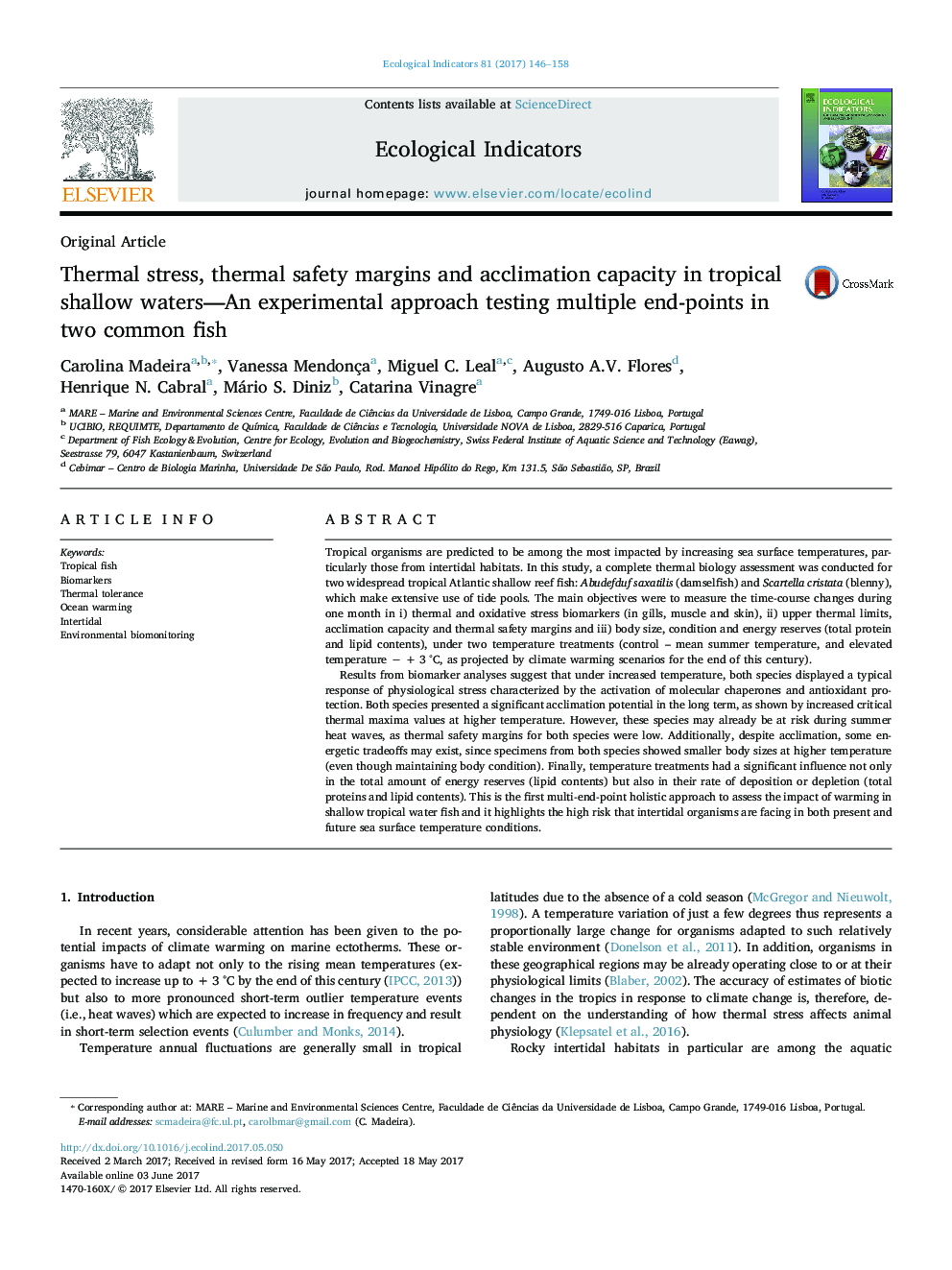| کد مقاله | کد نشریه | سال انتشار | مقاله انگلیسی | نسخه تمام متن |
|---|---|---|---|---|
| 5741419 | 1617121 | 2017 | 13 صفحه PDF | دانلود رایگان |

- Thermal stress was evaluated in two tropical fish species using multiple end-points.
- Chaperones, catalase, ubiquitin and lipid peroxides were the most responsive markers.
- Gills proved to be the best tissue to monitor cellular stress responses.
- Both fish showed acclimation ability but limited thermal safety margins.
- Juvenile fish stages may be at risk in tide pools under warming scenarios.
Tropical organisms are predicted to be among the most impacted by increasing sea surface temperatures, particularly those from intertidal habitats. In this study, a complete thermal biology assessment was conducted for two widespread tropical Atlantic shallow reef fish: Abudefduf saxatilis (damselfish) and Scartella cristata (blenny), which make extensive use of tide pools. The main objectives were to measure the time-course changes during one month in i) thermal and oxidative stress biomarkers (in gills, muscle and skin), ii) upper thermal limits, acclimation capacity and thermal safety margins and iii) body size, condition and energy reserves (total protein and lipid contents), under two temperature treatments (control - mean summer temperature, and elevated temperature â + 3 °C, as projected by climate warming scenarios for the end of this century).Results from biomarker analyses suggest that under increased temperature, both species displayed a typical response of physiological stress characterized by the activation of molecular chaperones and antioxidant protection. Both species presented a significant acclimation potential in the long term, as shown by increased critical thermal maxima values at higher temperature. However, these species may already be at risk during summer heat waves, as thermal safety margins for both species were low. Additionally, despite acclimation, some energetic tradeoffs may exist, since specimens from both species showed smaller body sizes at higher temperature (even though maintaining body condition). Finally, temperature treatments had a significant influence not only in the total amount of energy reserves (lipid contents) but also in their rate of deposition or depletion (total proteins and lipid contents). This is the first multi-end-point holistic approach to assess the impact of warming in shallow tropical water fish and it highlights the high risk that intertidal organisms are facing in both present and future sea surface temperature conditions.
346
Journal: Ecological Indicators - Volume 81, October 2017, Pages 146-158